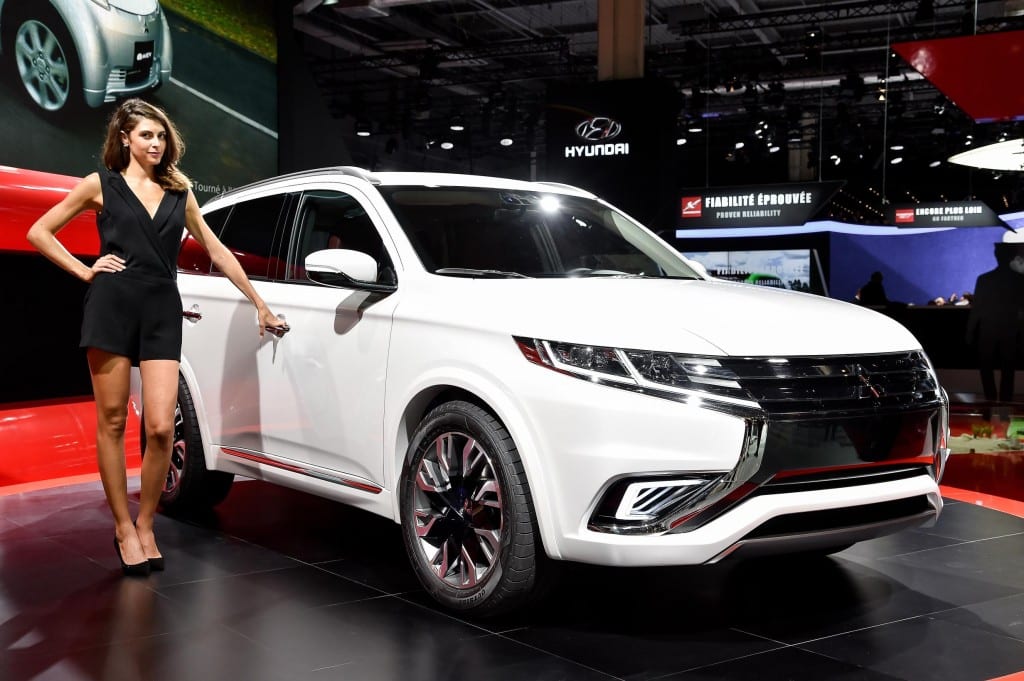
With its decision to end auto production in the U.S., where Detroit’s Big Three and global giants dominate, Mitsubishi Motors Corp. has become the latest second-tier car maker to shift its focus away from crowded, mature markets to smaller emerging economies where there is less competition and more chance to grow.
Japan’s sixth-biggest car maker—which produces about 1.1 million cars a year—said last week that it is ending production at its only U.S. plant, in Normal, Ill. At the same time, Mitsubishi Motors is ramping up its operations in Southeast Asia, building a plant in Indonesia and starting production this year at a factory in the Philippines that the company acquired from Ford Motor Co.
Other small auto makers have taken a similar approach, including Suzuki Motor Corp., which largely withdrew from the U.S. market in 2012 to concentrate on places such as India, where it is the market leader, and Daihatsu Motor Co., which abandoned the U.S. two decades ago to focus on markets such as Indonesia.
“We have a long history in Thailand, Indonesia and the Philippines, a larger market share compared to other regions, and a strong brand image, which are very big advantages,” Mitsubishi Motors Chief Executive Osamu Masuko said in an interview earlier this year.
The expanding population and growth potential in the region are also attractive, he said. In addition to fast-growing markets such as Indonesia, he cited future prospects in countries such as Myanmar, Cambodia and Laos, which until now have barely featured in auto makers’ global strategies.
Mitsubishi Motors will continue selling cars in the U.S. by importing vehicles from Thailand and Japan, a move analysts say will likely boost profitability because a weakening yen is letting Japanese auto makers make vehicles more cheaply at home than in the U.S.
The U.S. factory, however, last year produced fewer than one-third of the 222,000 vehicles it made at its peak in 2000, because of slow sales in the U.S. as well as dwindling exports to Russia. Mitsubishi Motors said Monday that it would work with the United Auto Workers union, which represents employees at the Illinois plant, to try to find a buyer.
“The reality is that the scale of the [U.S.] plant is very small compared with manufacturing plants of other companies,” Mitsubishi Motors’ president and chief operating officer, Tetsuro Aikawa, said during a news conference Monday. “It was becoming clear that the plant didn’t have an economic rationale.”
Mitsubishi Motors’ shift highlights the economic realities for smaller car makers, some of which are choosing to concentrate their limited financial resources on emerging markets to tap demand for new cars. That focus lets the car makers design and build models better suited to consumers in their selected markets. Mitsubishi, for example, is developing a new compact multipurpose vehicle for Indonesia, where such cars, with high capacity and low operating costs, are popular.
Emerging markets also tend to have fewer competitors than mature ones. Although Japanese car makers, led by Toyota Motor Corp., have been operating in Southeast Asia for decades and dominate the market, U.S. and German auto makers have struggled. In Indonesia, Japanese auto makers together hold about 90% of the market share. This year, General Motors Co. shut its assembly plant in Indonesia. It is now shifting strategy to team with a Chinese joint-venture partner, SAIC Motor Corp., to manufacture and sell low-cost minivans in Southeast Asia’s most populous nation.
In recent years, Mitsubishi Motors has been increasingly oriented toward Southeast Asia, which now accounts for roughly 20% of the auto maker’s annual global sales. Thailand, where Mitsubishi has three factories, has become an export hub for the company.
Shares in Mitsubishi Motors rose 5.5% on Monday, as analysts said the company could reap savings by ending U.S. production. Mitsubishi currently manufactures the Outlander Sport at the U.S. plant, but it plans to shift output of that model to a plant in Japan.
Masataka Kunugimoto, an analyst at Nomura Securities, estimates that costs to make the Outlander Sport in Japan would likely be at least ¥200,000 ($1,615) lower per vehicle than in the U.S., because of a weaker yen.
Some analysts say that if the yen strengthens, Mitsubishi Motors might pull out of the U.S. altogether.
“If current foreign-exchange levels continue, it can continue exporting” from Japan to the U.S., said Koji Endo, an automotive analyst at Advanced Research Japan. “But in the case that the yen strengthens again in the future, there’s a possibility that it won’t be able to export.”

